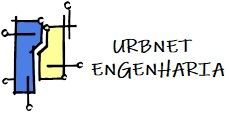Why HTML Formatting is Important for Blog Posts
When it comes to creating engaging and visually appealing blog posts, HTML formatting plays a crucial role. While it may seem like a technical aspect that only web developers need to worry about, understanding HTML can greatly enhance the overall readability and user experience of your blog content. In this article, we will explore the importance of HTML formatting and how it can benefit both writers and readers.
Enhancing Readability with HTML Formatting
One of the primary reasons why HTML formatting is important for blog posts is that it helps improve readability. By using HTML tags such as headings, paragraphs, and lists, you can structure your content in a way that is easy to scan and understand. Headings, denoted by the <h2> tag in HTML, allow you to divide your content into sections, making it easier for readers to navigate and find the information they are looking for.
Additionally, HTML formatting allows you to emphasize certain elements within your blog post. For example, you can use the <strong> tag to highlight important keywords or phrases, or the <em> tag to add emphasis to specific words. These formatting options not only make your content more visually appealing but also help convey your message more effectively.
Improving User Experience and Accessibility
Another significant advantage of using HTML formatting in blog posts is that it improves the overall user experience and accessibility of your content. When you structure your content with HTML tags, it becomes easier for screen readers to navigate and understand the information. This is particularly important for individuals with visual impairments who rely on assistive technologies to access web content.
Furthermore, HTML formatting allows your blog posts to be more responsive and adaptable to different devices and screen sizes. With the increasing use of mobile devices to browse the internet, it is crucial to ensure that your blog posts are optimized for mobile viewing. By using HTML tags like <div> and <span>, you can create flexible layouts that adjust to different screen sizes, providing a seamless reading experience for your audience.
Optimizing SEO with HTML Formatting
HTML formatting also plays a vital role in optimizing your blog posts for search engines. Search engine optimization (SEO) is the practice of improving your website’s visibility in search engine results pages, and HTML formatting can contribute to this effort. By using proper heading tags, meta descriptions, and alt attributes for images, you can provide search engines with valuable information about your content, making it more likely to appear in relevant search queries.
Additionally, HTML formatting allows you to incorporate internal and external links within your blog posts. Internal links help search engines understand the structure and hierarchy of your website, while external links provide additional resources and credibility to your content. By using HTML tags like <a> for links, you can optimize your blog posts for both user experience and SEO.
Conclusion
In conclusion, HTML formatting is a crucial aspect of creating engaging and accessible blog posts. By using HTML tags to structure your content, you can enhance readability, improve user experience, and optimize your blog posts for search engines. Whether you are a writer or a web developer, understanding HTML and its importance in blog post formatting can greatly benefit your online presence and ensure that your content reaches a wider audience.

0 comentário